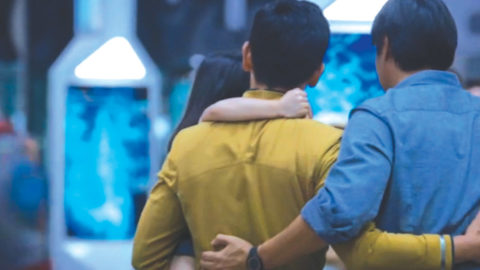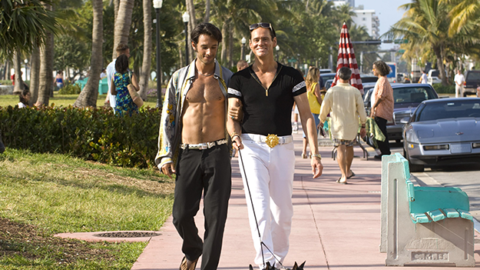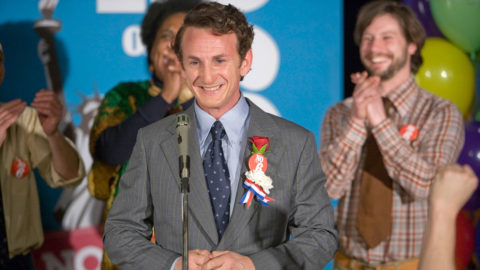Queer & Now & Then: 2018
In this biweekly column, I look back through a century of cinema for traces of queerness, whether in plain sight or under the surface. Read the introductory essay.
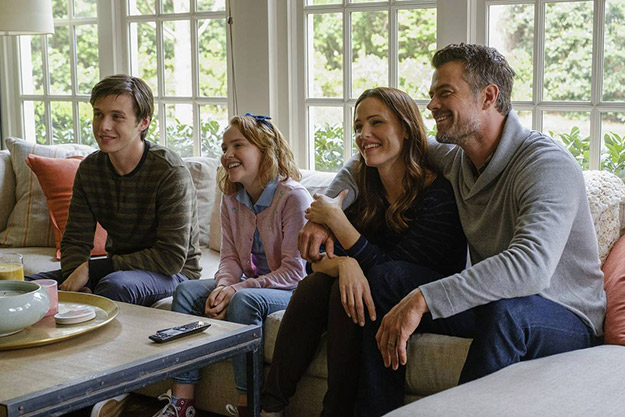
Few things will rankle a true scholar of queerness more than the perception that a given work is peddling normality. The long-held wisdom is that queer art and theory get their power from existing outside of traditional heteronormative life cycles and principles, and that to completely integrate queer people into the mainstream is to dilute our difference and therefore strip us of identity. Of course, this leads us to the great political irony: that progress for LGBT people in the U.S. and beyond has, for decades, been predicated upon social acceptance by the majority, and that to achieve widespread integration it’s been deemed necessary to normalize gayness, whether as a biological imperative or a social convention—in other words, as a non-radical state of being. Anecdotally: I can say that I love that I was legally recognized as enough of a human and citizen by the country I was born into that I was able to marry my husband, but I was less moved by the burgeoning social expectation that I should get married; similarly, I love that gay friends of mine are having children of their own, but I certainly don’t love when we’re asked, as a matter of course, when we’re going to have kids.
One might say the gains outweigh the losses in such an ideological struggle, though being subsumed into an already homogenized culture of straightness has limited appeal. In movies, gay has never truly gone mainstream, and, considering the state of our cinema, not to mention our country, at this point it never might (as Mark Harris wrote in the November/December 2016 issue of Film Comment, “they don’t include gay people in their movies because they don’t have to; we don’t move the needle on revenue, and we rarely protest our absence”). Yet films that reach even the barest form of mass audience are often most vulnerable to accusations that they’re somehow capitulating to dominant political, narrative, or aesthetic modes—most significant in the U.S., perhaps, have been Brokeback Mountain (2005) and Milk (2008), which respectively take on, rather than truly subvert, the Western and the Great Man Biopic. In both cases, though, the films have been tagged as “tony” or “prestige,” synonyms of a sort for “normal.” Accusations of this kind resurfaced around Luca Guadagnino’s recent Call Me by Your Name, by no means a blockbuster but a Best Picture nominee nonetheless, about a privileged American teen’s summertime sexual awakening while vacationing with his parents in the dreamiest dream of Italy this side of, well, every other Guadagnino movie. In his essay “Elio’s Education,” scholar D. A. Miller has placed it on a continuum of Mainstream Gay Movies (or MGMs) with Maurice (1987), Brokeback, and even Moonlight (2016) for its alleged aestheticization of gay male sexuality: in other words its elevation and exaltation of same-sex desire for its beauty, with the implicit goal of erotically neutering and normalizing it for straight audiences.
What will Miller (despite what you might think of his take on the MGM, he’s one of the finest living theorists on queer film and theater) make of 20th Century Fox’s Love, Simon? Greg Berlanti’s teen coming-out tale, currently playing in almost 2,500 theaters, is an undeniable breakthrough: it’s a Hollywood studio film featuring a gay protagonist. The film’s explicitly stated intention is to normalize. It’s right there in the opening voiceover confession spoken by young Simon to the audience: “For the most part my life is totally normal . . . My friends and I do everything friends do . . . I’m just like you.” In case you came to the theater late, it’s repeated barely 10 minutes later when the narration is revealed as an email he’s typing out to an anonymous friend. Again: “My life is totally normal . . . except for one huge-ass secret.”
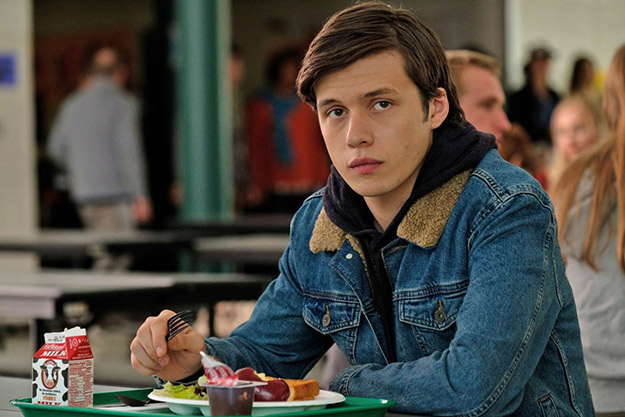
There is a fairly cut-and-dried presumption of audience here. I’m just like you . . . but. Going by this opening appeal, the viewership is clearly assumed to be majority straight (as with any prior Hollywood film), and therefore it becomes an appeal to a—largely imaginary—hetero audience. Sweet 17-year-old Simon (Nick Robinson) is normal, the film says. Putting aside for a moment that using the word raises a whole host of other questions around what normal is (is it Simon’s whiteness that makes him normal? How about his suburban Atlanta family’s evident upper-middle-class wealth?), the film is so aggressive in its tactics to gain its ostensible audience’s sympathy that it initially might alienate the very viewers who would be most receptive to it. This is because Love, Simon isn’t particularly interesting or provocative as a pleading for tolerance and understanding; as the most mainstream Hollywood gay film yet produced, it’s by design the most agonizingly normal queer product imaginable, its narrative beats and overlit, spit-shined aesthetic taken right out of the American teen film handbook, historically a ground zero site for hetero reification.
What makes Love, Simon useful—and where its queerness has real meaning—is how it addresses issues around acceptance for a very particular audience: not its imagined audience, its real one. The dream of acceptance, however politically jejune in some circles, is extremely acute, and most important, for the teenager, for whom conformity is something like a survival imperative. With refreshing exception, teens want beaming, sparkly mass-consumer products that reassure them that they’re making the right social choices. This hasn’t changed much even in our current age of “This Is Me!” retrenchment, in which positioning one’s alleged individuality trumps all; how we choose to present ourselves, at whatever age, is the result of a series of culturally condoned or rejected ideas that have filtered into the mainstream. Because of all this, Love, Simon, a perfectly sculpted contemporary product careful not to offend anyone, featuring an absolutely adorable suburban white kid who must come out to his absolutely adorable, multicultural group of friends and his absolutely adorable, completely understanding mom and dad (played by Jennifer Garner and Josh Duhamel, no less), functions best as a work of wish fulfillment and fantasy.
So, despite the way it chooses to carry its heavy cultural baggage, is Love, Simon a good movie? Yes, I think so. There’s an undeniable power to its fantasy, but the film has a sophisticated enough narrative and shape that it deserves more credit than the simple, dismissive “I’m glad it exists, but…” response I’ve anecdotally heard from more than one gay viewer. Its YA-novel story contortions (it’s based on a 2015 Becky Albertalli book with the more provocative title Simon vs. the Homo Sapiens Agenda) adeptly develop the relationships between Simon and his closest friends, Leah (Katherine Langford), Abby (Alexandra Shipp), and Nick (Jorge Lendeborg Jr.), in perceptively knotty fashion. After he is blackmailed about his sexuality by a smart-alecky but sad-sack classmate (Logan Miller) who reads the private emails Simon has written to his mystery love, Simon will do anything to maintain the status quo in his life, his escalating cover-up lies unintentionally pitting his friends against each other and creating confusion and resentment among the group and, finally, toward him. The narrative twists and turns are mostly unremarkable teen romance stuff, but it all serves a greater purpose certainly less trod in mainstream American film, illustrating the essentially destructive nature of the closet.
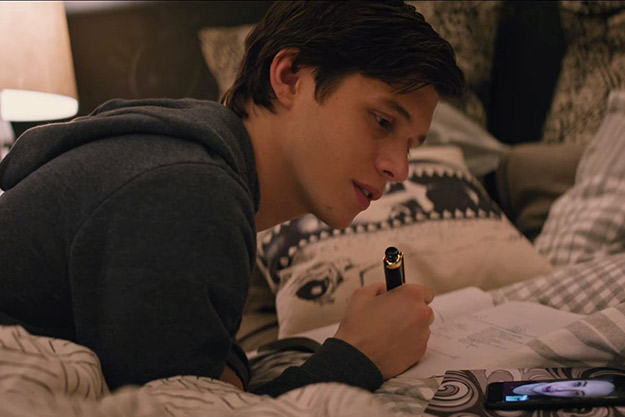
The representational limitations of a film so obsessed with acceptance are evident, however, and speak undoubtedly to complicated questions around assimilation, least surprisingly in the unambivalent butchness of Simon—and actor Nick Robinson—which is implicitly positioned as the “right” (i.e., more normal) kind of gay during a dream sequence in which he fantasizes about his college future as a homo paradise, a faux-musical sequence of choreography and rainbow flags cut short when Simon muses, “Okay, maybe not that gay.” There is a more compelling, less capital-m Masculine side character, Ethan, played by out African-American Atlanta native Clark Moore, but he’s fairly marginalized in the narrative. Also, Love, Simon is conspicuously less sexual than any other teen comedy you can imagine—even on the PG-13 level. The way the film addresses desire (the core of sexuality, after all) is mostly relegated to Simon confessing his nascent prepubescent crushes, Daniel Radcliffe and Kit Harrington, and one timid flirtation with a hot older landscaper across the street he sees from his bedroom window (shades of The Long Day Closes here, but in this case, Simon would almost definitely be masturbating). As a full-fledged, burgeoning sexual being, Simon claims to barely have the vocabulary to admit appreciating the male form, which feels at once both completely authentic to the character’s stunted self-awareness and utterly convenient for a film disinterested in sex.
Love, Simon ends with a kiss, and it’s sweet and it’s meaningful and it elicited appreciative squeals from a row of teens behind me on the Saturday night I went. It’s impossible to be aware of the century-old dearth of gay representation on movie screens and not be moved by this on some level. Depictions of otherness in art have become so dramatically politicized in our 21st-century American liberal moment that such small triumphs can get drowned out by roars of either approval or displeasure. We may not fear much for the future of handsome, charming, acne-free Simon, but that doesn’t make his coming-out any less significant in its time and place. In fact, that he still has such difficulty admitting his true self despite his socioeconomic, cultural, and physical advantages says a lot about how far we have to go—and how far “normal” gets you anyway.
Michael Koresky is the Director of Editorial and Creative Strategy at Film Society of Lincoln Center; the co-founder and co-editor of Reverse Shot; a frequent contributor to the Criterion Collection; and the author of the book Terence Davies, published by University of Illinois Press.



